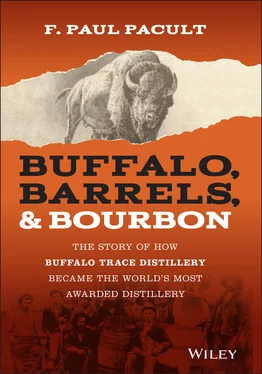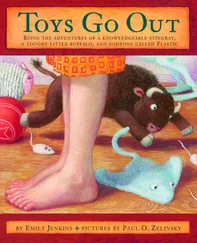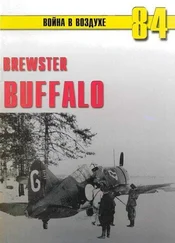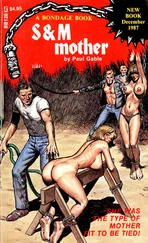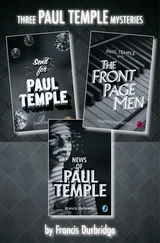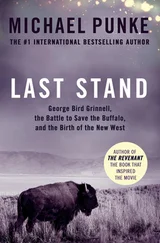It is worth noting now that the official spelling of Kentucky with a “y” came later, around the time the territory gained statehood in 1792. Early variations on the term include Kentucke , Kaintuckee , and Cantuckey . The original name is thought to have been possibly derived from one of the Native American descriptors for the region, such as kan-tah-the from the Wyandotte nation or kin-athiki from the Algonquin tribe.
Mentioned previously in Chapter 1, John Filson was another Kentucky surveyor, journalist, and cartographer of distinction. Filson, who originally hailed from Lancaster, Pennsylvania, supplied yet another finely fashioned map of Kentucky, but years later in 1784, immediately after the conclusion of American Revolutionary War hostilities. The inscription at the top of Filson's map reads, with admirable politeness, “This map of Kentucke: drawn from actual observations, is inscribed with the most perfect respect, to the honorable congress of the United States of America, and to his Excell'cy George Washington, late commander in chief of their army. By their humble servant, John Filson. 1784.” 2
Filson's outstanding mapmaking effort had a tight, pinpoint scale of 10 miles to an inch, making it easily readable for anyone hankering to make the weeks'-long journey from the eastern colonies. Filson himself established roots near the settlement of Lexington in approximately 1782 after purchasing a sizeable parcel of land. His anecdotal book, published like his map in 1784, was titled The Discovery, Settlement and Present State of Kentucke . It sold for $1.50 and enjoyed but a single pressing that numbered 1,500 copies.

John Filson's 1784 map of Kentucky.
Library of Congress
Tragically, John Filson vanished in October of 1788 while on a surveying mission in the remote woodlands of southern Ohio. The enduring story is that after Filson's group happened upon a small Shawnee hunting camp, a heated dispute ensued among the members of his party as to how to approach the tribe, either peacefully or with muskets blazing. The disagreement proved so vehement that it splintered the group into smaller factions. In what can only be considered a lapse of sound judgment, the frustrated Filson wandered off on his own into the depths of the forest to continue his surveying mission. Like so many men and women of his time, John Filson was never heard from again and his body was never found. 3
Adventurers from the New England colonies tended to explore the virgin region north of the Ohio River, the expansive Great Lakes area of present-day Ohio, Indiana, Illinois, Michigan, and Wisconsin, termed the Northwest Territory. By contrast, Evans, Filson, and other surveyors from Virginia and North Carolina colonies, most prominently, John Floyd, James Douglas, William Preston, and Isaac Hite, served generations of travelers by furnishing the logistical tools via their cartographic and journalistic data for the inevitable settlement of northern Kentucky. Small wonder, then, that after the signing of the Treaty of Fort Stanwix in October 1768 between Great Britain and the Six Nations of the Iroquois Confederation, relinquishing what is now much of Kentucky to the British Crown, settlers in Virginia Colony began packing their wagons, oxen, packhorses, and mules. This fateful treaty, signed by Sir William Johnson and the Iroquois chiefs, gave license to colonists to venture, at least theoretically, unfettered into the far western sections of Pennsylvania, New York, and Virginia. The treaty's contents included western Virginia's Fincastle County, in what is now most of Kentucky. One of the Fort Stanwix treaty's glaring shortcomings, however, included the exclusion from the agreement of the Shawnee and Cherokee nations, two important non-Iroquois tribes of approximately 4,000 and 10,000 people, respectively. This omission would, in part, be the cause of fatal trouble down the road. From 1750 to 1785, thousands of colonial travelers trudged westward across Pennsylvania Colony to faraway Fort Pitt, original site of the city of Pittsburgh. Built by the British from 1759 to 1761 during the French and Indian War at the confluence of the Monongahela and Alleghany rivers, Fort Pitt proved to be the ideal launching point onto the frontier's west-southwest leading aquatic superhighway, the Ohio River.
Other seekers for adventure, riches, and new horizons, including Daniel Boone and his comrades, walked, rode a mule or horse, or drove bumpy, two-wheel buckboards through the Cumberland Gap, a naturally formed V-shaped passage sliced through the Appalachian Mountains. The renowned Cumberland Gap is located near what today is the state border between Virginia to the east and Kentucky to the northwest. Many male pilgrims journeyed west in the late 1760s and early 1770s via the Gap to find the parcels of land granted to them via the Royal Proclamation of October 7, 1763, by the final Royal Governor of Virginia Colony, John Murray, fourth Earl of Dunmore. The land grants, from a total of 172,850 acres of available land, were payment for their military service to the British Crown during the French and Indian War (1754–1763). Such land-as-compensation arrangements were commonplace at the time, due primarily to the colonial government's inability to pay soldiers in currency for their time in uniform on behalf of the British Crown. Undeveloped land was plentiful and strongly desired in the 1760s.
This active period of movement in the early second half of the eighteenth century was pivotal, as we shall see, in setting in motion the saga of Buffalo Trace Distillery. On May 10, 1773, the five members of the McAfee Company, James, George, and Robert McAfee along with John McCoun and James Pawling, made their way west from Botetourt County, Virginia, into the verdant Bluegrass region for the purpose of finding suitable land on which to settle. Soon after reaching the 97-mile long Kanawha River in what is now West Virginia, the three McAfees dispatched McCoun and Pawling back to their Virginia homesteads with their mounts and encountered Hancock Taylor's group of surveyors. Taylor, like so many other commissioned surveyors, was en route to traverse the Ohio River westward to its joining with the Mississippi River, exploring the adjacent countryside along the way. Together on June 1, 1773, at the mouth of the Kanawha, the McAfees and Taylor met up with Thomas Bullitt, who led a large contingent of 40 men for the Ohio Land Company. 4 Bullitt's mission was likewise to sail down the Ohio River looking for suitable places on which to build outposts and defensive blockhouses. For reasons of safe passage and shared information, the three companies allied, creating a formidable armada with more than 50 able-bodied men. They floated down the tricky currents of the Ohio River in bark canoes and crude pirogues, or dugouts. Once the flotilla reached the mouth of Limestone Creek, later to become the settlement of Maysville, Kentucky, Robert McAfee, against cries of sibling protest, strode off alone to explore on foot the riverside expanse on the Ohio's desolate south bank. After days of exhausting solo exploration, traveling with deliberation west/southwest along the rocky banks of the Ohio, McAfee, in full possession of his scalp, rejoined his brothers, Hancock Taylor, and Thomas Bullitt at the mouth of the 303-mile-long Licking River. 5
Days later, the trio of companies beached where the Kentucky River merged with the much larger Ohio. There on July 4, 1773, Hancock Taylor and the McAfees separated from Thomas Bullitt's Ohio Land Company after deciding instead to paddle their pirogues laden with flour, gunpowder, beans, and salted pork up the placid, 259-mile-long Kentucky River in search of suitable terrain to survey for homesteading. Meanwhile, Bullitt and his party continued on their westward journey down the wide Ohio River.
Читать дальше
